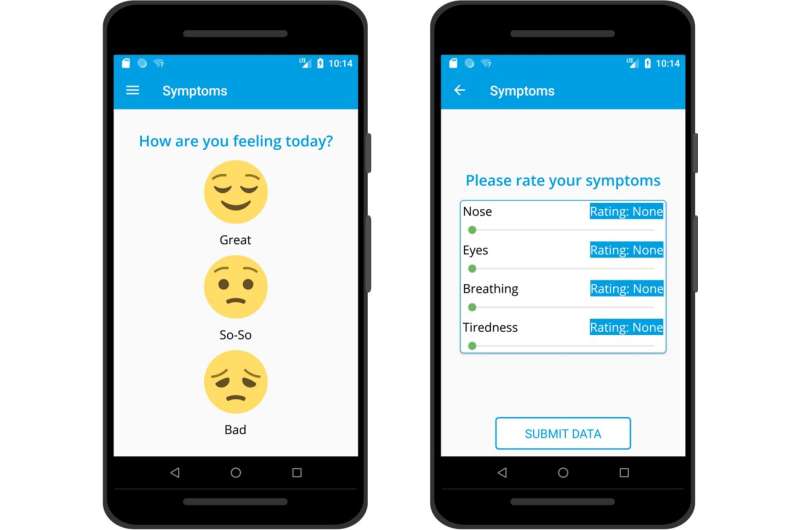This article has been reviewed according to Science X's editorial process and policies. Editors have highlighted the following attributes while ensuring the content's credibility:
fact-checked
peer-reviewed publication
trusted source
proofread
People in urban areas have worse hay fever symptoms, analysis suggests

People living in urban areas report significantly worse hay fever symptoms according to the first study to compare pollution levels with the severity and duration of real-time symptoms.
The University of Manchester led team studied 36,145 symptom reports submitted over five years—from 2016 to 2020—by more than 700 Britons using a citizen science application called Britain Breathing.
The study, published in Scientific Reports, compares self-reported allergy symptoms in urban and rural locations.
The severity of three symptoms captured by the app: runny nose, sore eyes and wheezy breathing, were roughly twice as severe in urban areas than in rural ones across all years.
The study combined pollution measurements and pollen and meteorological data taken from the U.K. Met Office with the real-time, geo-positioned reports to examine the relationship between symptom severity and air quality.
The analysis shows that urban areas record significantly higher symptom severity and longer symptom duration for all years except 2017. Rural areas did not record significantly higher symptom severity in any year.
Symptom reports were labeled as urban or rural using land-use data from the U.K.'s Office for National Statistics.
Symptom severity was significantly correlated with ozone levels. Ozone has previously been linked to respiratory problems.
A potential reason for 2017 being an exception could be, argue the team, that the number of days with moderate or higher O3 levels dropped slightly that year before rising sharply and staying relatively high in subsequent years.
And 2017 was warmer and wetter in 2017 than the other years, which may have had an effect, either on pollen counts, pollution or participants' biological reactions they add.
One of the study authors- immunologist Professor Sheena Cruickshank said, "The worldwide prevalence of allergic respiratory disease has risen considerably in recent years. However hay fever affects people differently and can change over a lifetime and data is lacking on how environmental factors may influence this.
"This study provides evidence that urban surroundings may exacerbate hay fever and asthma symptoms. It also provides a broader picture of chronic health issues experienced by hay fever and asthma sufferers, as opposed to only observing those with more acute and/or problematic reactions.
"These differences in allergy symptoms may be due to variation in the levels of pollutants, pollen counts and seasonality across land-use types."
Professor of Computer Science Caroline Jay said, "The relationship between where people lived and the symptoms they experience was clear, but why people experience worse symptoms in urban areas is complex. There may be many aspects of the city environment that have a negative impact on respiratory health."
More information: Ann Gledson et al, A comparison of experience sampled hay fever symptom severity across rural and urban areas of the UK, Scientific Reports (2023). DOI: 10.1038/s41598-023-30027-x. www.nature.com/articles/s41598-023-30027-x



















